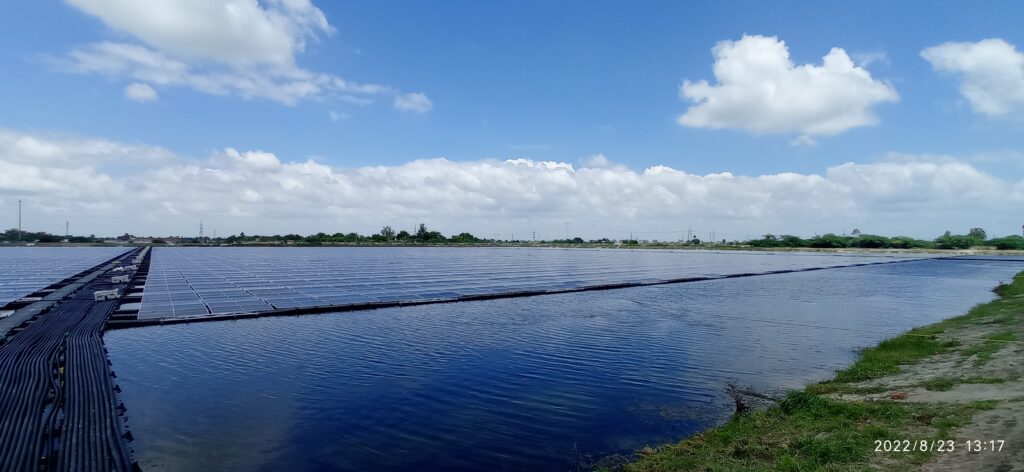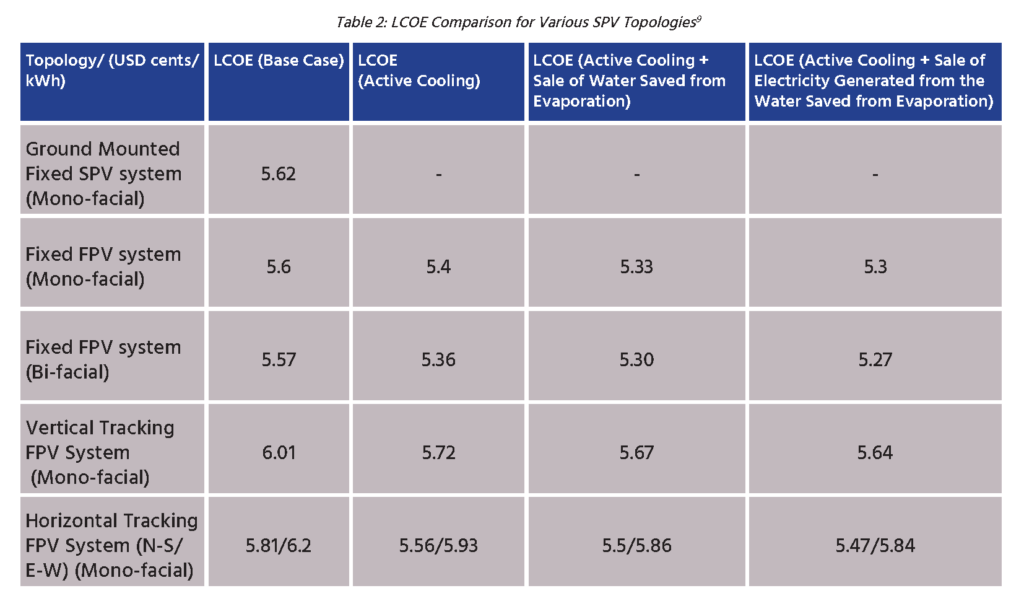Jaideep Saraswat, Nikhil Mall

Within the framework of the Paris Agreement, approximately 197 nations have committed to restricting global temperature rise to well below 2 degrees Celsius, with a concerted effort to limit it to 1.5 degrees Celsius[1]. Achieving this objective demands the widespread adoption of clean energy technologies, including solar and wind power. Solar energy presents a particularly promising option due to its global ubiquity, although solar insolation levels vary by location. Solar Photovoltaic Systems (SPV) can harness this solar insolation to generate clean electricity. Various SPV system topologies exist, such as Ground Mounted Solar PV systems (GPV), Solar rooftop installations, and Floating Solar Systems (FPV), making it adaptable to diverse geographic settings.
As of 2022, a remarkable 1,182 gigawatts (GW) of solar PV capacity have been deployed worldwide, with an additional 236 GW added in the same year alone[2]. These solar power systems collectively contributed 6.2% to the global electricity consumption, highlighting their growing significance in the transition to cleaner and more sustainable energy sources.
It is noteworthy that the predominant share of solar deployments consists of large-scale GPV systems. On average, a 1 MW installation of these ground-mounted systems necessitates 3.5 to 4 acres of land. This underscores the importance of investigating alternative configurations to minimize land usage. One of the primary advantages of FPV is its ability to optimize land use by utilizing water surfaces, thus avoiding competition with land needed for agriculture and wildlife conservation[3]. Studies have suggested that covering just 1 percent of artificial water bodies with FPV systems could potentially satisfy up to 25 percent of the world’s electricity demand. Furthermore, FPV systems benefit from the cooling effect of water, resulting in increased power production, with performance gains ranging from 1.5 to 22 percent. This cooling effect ensures efficient panel operation even in hot weather. FPV also complements other renewable sources, such as wind and hydropower, improving overall energy yield and reducing the need for costly transmission infrastructure. Moreover, FPV systems reduce algal growth, conserve water, and create economic opportunities. Still, the FPV systems represent 0.4% of the global solar PV deployment. There is a need to ramp up efforts in mainstreaming FPV projects.
However, as the water bodies are limited it become all the more important to generate more energy from these deployments. As the solar azimuth angle and the solar altitude angle varies continuously throughout the day, utilizing tracking systems can lead to enhanced generation. As per research studies, the single-axis and dual-axis tracking systems can increase electrical energy yield by 22% -56% compared to fixed PV systems[4].
The technology for GPV tracking systems is firmly established, incorporating electric motors, light sensors, gearboxes, and electronic control systems. Numerous operational facilities employ these tracking systems already. In contrast, FPV tracking systems are still in their early stages of development. This is due to the need for careful consideration of challenges related to buoyancy and wave disturbances, as well as the faster deterioration of components in high-humidity environments over water bodies compared to GPV systems. However, these challenges should not deter the exploration of tracking solutions for FPV systems.
Several tracking solutions have been devised for FPV systems. One approach involves placing FPV systems within a confined facility surrounded by anchored structures, which can be circular or polygonal in shape. These structures can be moved in relation to a fixed structure using electric motors to track the sun’s movement. Another solution involves horizontal tracking using gable structures.
Another innovative solution is the use of a pivotless tracking mechanism for FPV systems as seen in Figure 1. This mechanism entails connecting the floating body, which includes the solar panels and pontoons, with a winding system. The position of the floating body is adjusted by altering the length of the wire. Additionally, the floating body is surrounded by mooring systems designed to stabilize and rotate the PV system. Each mooring system is connected to a buoy, sinker, and anchor to secure it on the water. Due to its pivotless design, this system can be applied to large-scale floating solar power systems, offering advantages such as reduced construction costs, simplified maintenance to avoid collisions between the pylon and structure, and safer operation during strong winds.
Several solution providers have emerged in this field, such as Xfloat[5] and Solarisfloat[6], offering innovative tracking solutions. These solution providers have successfully implemented their technology in pilot FPV plants around the world.

Deploying FPV systems with tracking mechanisms results in a substantial boost in energy generation when compared to GPV systems, as illustrated in Table 1. It is evident that the most significant enhancements are achieved by the dual-axis tracking FPV system. The increased energy output can be attributed to various factors, including improved cooling of modules, continuous solar tracking, and the utilization of bifacial modules.

Nevertheless, decisions regarding the adoption of tracking solutions are primarily driven by economic considerations. For an owner to opt for a tracking solution, the Levelized Cost of Energy (LCOE) must, at the very least, be at par with that of GPV systems. As demonstrated in Table 2, the LCOE for FPV systems, both with monofacial and bifacial modules, is lower than that of fixed GPV systems. Furthermore, tracking solutions, particularly horizontal tracking along the North-South axis, become economically feasible when active cooling measures are taken into account. Additional revenue can be generated by selling the water conserved from evaporation or utilizing it for electricity generation, especially in the context of hydro power plants. This can make tracking solutions even more lucrative.
It is worth noting that while the analysis in Table 2 is not specific to the Indian context, it underscores the importance of conducting a similar comprehensive evaluation in India. This evaluation is crucial for developing appropriate policy incentives for FPV systems. Additionally, providing manufacturing support to both floating system manufacturers and tracker manufacturers can lead to cost reductions, making tracking solutions even more economically viable for FPV systems.

References
[1] https://www.nature.com/articles/s41558-021-01245-w
[2] https://iea-pvps.org/
[3] https://www.mdpi.com/2071-1050/12/19/8154
[4] https://www.mdpi.com/1996-1073/13/16/4224
[5] https://xfloat.co/product/
[6] https://www.solarisfloat.com/who-we-are/
[7] https://www.mdpi.com/2076-3417/12/24/12926
[8] https://www.sciencedirect.com/science/article/pii/S2405844022013767?ref=pdf_download&fr=RR-2&rr=8186808a6dd31bce
[9] https://www.sciencedirect.com/science/article/pii/S0973082623001400




